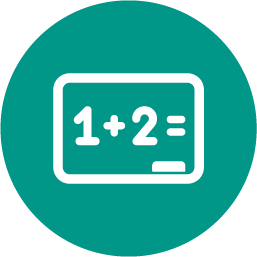
Computers and Technology, 06.10.2019 02:00 kevin72836
Brandon purchased a new processor online as an upgrade. when he purchased the processor, he made sure that it used the same socket his computer’s motherboard used. but he did not check to see whether the motherboard chipset was compatible. what will happen if you install a processor on a motherboard that can fit the socket but is the wrong chipset? a. damage to both the processor and the motherboard. b. the computer will work fine. c. the computer will power on but will fail post. d. you will not be able install the processor in the wrong motherboard.

Answers: 1


Another question on Computers and Technology

Computers and Technology, 22.06.2019 04:30
Ryan is working on the layout of her web page. she needs to figure out where her header, navigation bar, text, and images should go. what technique can her?
Answers: 1

Computers and Technology, 22.06.2019 06:00
In outlook how can cherie look at the details of an event that appears on the month view of her calendar? check all that apply. by switching to the detail view by switching to the week view by switching to the day view by right-clicking on the event by double-clicking on the event by highlighting the event
Answers: 2

Computers and Technology, 22.06.2019 13:10
Calculating the "total price" of an item is tedious, so implement a get_item_cost method that just returns the quantity times the price for an item. by the way, the technical term for this kind of instance method is an accessor method, but you'll hear developers calling them getters because they always start with "get" and they get some value from instance attributes. in order to make the items sortable by their total total price, we need to customize our class. search the lectures slides for "magic" to see how to do this. see section 9.8 for an additional reference. the receipt class: this will be the class that defines our receipt type. obviously, a receipt will consist of the items on the receipt. this is called the composition design pattern. and it is very powerful. instance attributes: customer_name : it is very important to always know everything you can about your customers for "analytics", so you will keep track of a string customer name in objects of type receipt. date : the legal team has required that you keep track of the dates that purchases happen for "legal reasons", so you will also keep track of the string date in objects of type receipt. cart_items : this will be a list of the items in the cart and hence end up on the receipt. methods: 1. create a default constructor that can take a customer name as an argument, but if it gets no customer name, it will just put "real human" for the customer_name attribute. it should also accept a date argument, but will just use the value "today" for the date instance attribute if no date is given. the parameters should be named the same as the instance attributes to keep things simple. 2. add_item : self-descriptive. takes a parameter which we hope beyond hope is of type itemtopurchase and adds it to the cart_items. returns none. 3. print_receipt : takes a single parameter isevil, with default value true. returns a total cost of all the items on the receipt (remember to factor in the quantity). prints the receipt based on the following specification: for example, if isevil is true, and customer_name and date are the default values: welcome to evilmart, real human today have an evil day! otherwise, it should print: welcome to goodgo, real human today have an good day! then the receipt should be printed in sorted order like we discussed earlier, but whether or not it starts with the highest cost (think reverse), depends on the value of isevil. if it is evil, then the lowest cost items should print first, but if it is good, then it will print the highest cost items first. (cost meaning price*quantity). remember to return the total cost regardless! your main() function: the main flow of control of your program should go in a main() function or the program will fail all the unit tests. get the name of the customer with the prompt: enter customer name: get the date with the prompt: enter today's date then, ask the question: are you evil? your program should consider the following as true: yeah yup let's face it: yes hint: what do these strings all have in common? your program should consider all the following as false: no nah perhaps but i'm leaning no (just be glad you don't have to handle "yeah no.") okay enough horsing around. (get it? aggies? ! horsing! ) next, in the main() function, you will have to create a receipt object and start adding things into it using an input-while loop. the loop will prompt the user for the item name exactly as in the previous zylab (9.11). but unlike the previous zylab, the loop will terminate only if an empty string is entered for the item name. then, the price and the quantity will be prompted for exactly as in the previous zylab. create the itemtopurchase objects in the same manner as the previous zylab, but don't forget to add them to the receipt using your add_item instance method. then, the items on the receipt should be printed with the same formatting as in the previous zylab, of course with either "good" or "evil" ordering. however, on the last line, the total should be printed as follows: where 10 is replaced by the actual total. sample run here is what a sample run of the final program should look like: enter customer name: nate enter today's date: 12/20/2019 are you evil? bwahahahaha yes enter the item name: bottled student tears enter the item price: 2 enter the item quantity: 299 enter the item name: salt enter the item price: 2 enter the item quantity: 1 enter the item name: welcome to evilmart, nate 12/20/2019 have an evil day! salt 1 @ $2 = $2 bottled student tears 299 @ $2 = $598 total: $600
Answers: 1

Computers and Technology, 23.06.2019 19:00
Now you’re on your own. include a short summary of this section with plots in your lab report. write a matlab script file to do steps (a) through (d) below. include a listing of the script file with your report. 1 the soundsc(xx,fs) function requires two arguments: the first one (xx) contains the vector of data to be played, the second argument (fs) is the sampling rate for playing the samples. in addition, soundsc(xx,fs) does automatic scaling and then calls sound(xx,fs) to actually play the signal. mcclellan, schafer, and yoder, dsp first, 2e, isbn 0-13-065562-7. prentice hall, upper saddle river, nj 07458. c 2015 pearson education, inc. 4 mcclellan, schafer and yoder, signal processing first. prentice hall, upper saddle river, new jersey, 2003. c 2003 prentice hall. (a) generate a time vector (tt) to cover a range of t that will exhibit approximately two cycles of the 4000 hz sinusoids defined in the next part, part (b). use a definition for tt similar to part 2.2(d). if we use t to denote the period of the sinusoids, define the starting time of the vector tt to be equal to t , and the ending time as ct . then the two cycles will include t d 0. finally, make sure that you have at least 25 samples per period of the sinusoidal wave. in other words, when you use the colon operator to define the time vector, make the increment small enough to generate 25 samples per period. (b) generate two 4000 hz sinusoids with arbitrary amplitude and time-shift. x1.t / d a1 cos.2
Answers: 1
You know the right answer?
Brandon purchased a new processor online as an upgrade. when he purchased the processor, he made sur...
Questions

History, 14.04.2020 22:17

Medicine, 14.04.2020 22:17






Physics, 14.04.2020 22:17

Mathematics, 14.04.2020 22:17


Health, 14.04.2020 22:17



Physics, 14.04.2020 22:17

Geography, 14.04.2020 22:17

Physics, 14.04.2020 22:17







